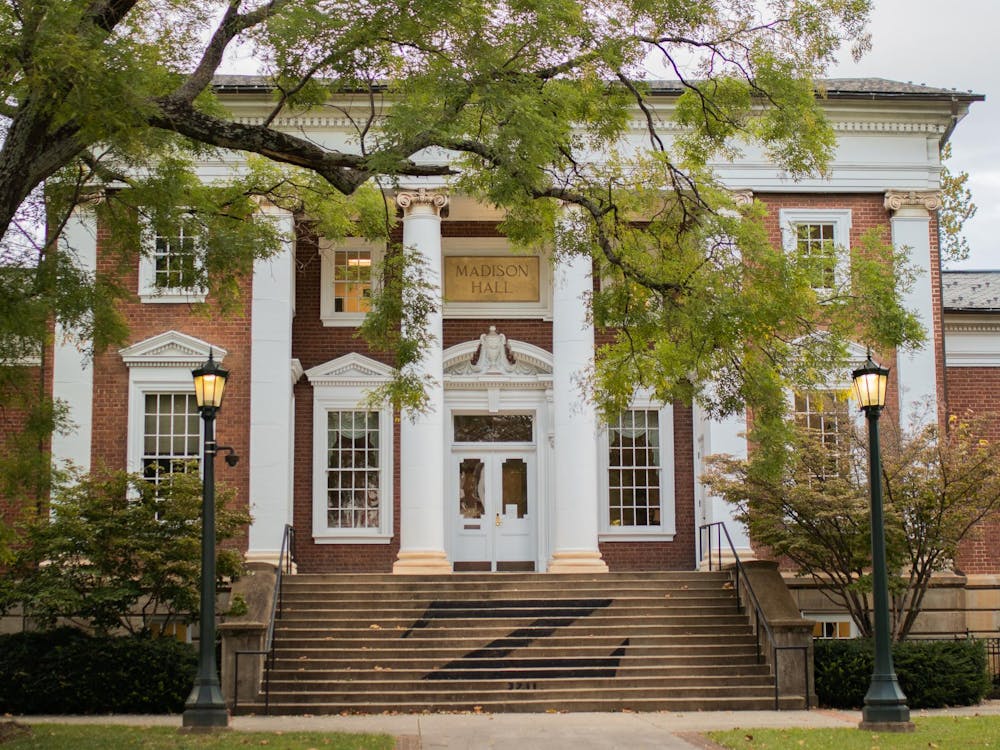The University is in the process of installing solar arrays on the new School of Data Science building and a University facility on Old Ivy Road, continuing a commitment to sustainability. Solar arrays are already present at other key locations across Grounds — the arrays help reduce energy costs and align with the University's 2030 Sustainability Plan, which aims to make the University carbon neutral by 2030.
The solar panels represent the latest additions to a larger solar array initiative at the University. Past solar projects include the 15-kilowatt array at the Facilities Management Shop Support and Office Building, as well as arrays at Ridley Hall, Old Ivy Stacks and other locations.
Solar arrays are collections of solar panels used to power individual buildings or contribute to a larger electric grid. Arrays offer a sustainable alternative to energy sources such as fossil fuels, whose emissions of greenhouse gasses like carbon dioxide cause environmental damage.
Sathish Anabathula, associate director of power and light, said the SDS building will host a 58.4-kilowatt solar system, while the building on Old Ivy Road will house a larger 208.12-kilowatt system.
“The roof-top solars are not little drop-in-the-bucket projects,” Anabathula said. “They are going to make a huge difference in our overall [energy] portfolio.”
In 2011, the University’s Board of Visitors set the goal of reducing the University’s greenhouse gas emissions to 25 percent below 2009-level emission levels by 2025, an objective met several years ago. According to Anabathula, the current solar projects play a crucial role in progression towards the sustainability goals of the 2030 plan, which also include making the University fossil fuel-free by 2050.
The Old Ivy Road facility will utilize solar panels covering 27 percent of its electricity needs — the remaining 73 percent of the building’s energy comes from Dominion Energy's grid. From the solar-powered 27 percent, the University will receive financial credit from Dominion, offsetting a portion of the total energy bill.
Unlike the Old Ivy Road project, the SDS building primarily is part of a University distribution system in which excess energy generated by the building’s solar panels will remain within the University’s energy grid, a decision made because of the smaller building’s lower energy demands.
Both installations employ a ballasted roof system, which is designed to ensure stability without compromising the building's structure. The panels, mounted on blocks and strategically positioned to withstand wind forces, contribute to a long-held sustainability vision.
Anabathula said that the University — already equipped with solar arrays on various structures, including the Central Grounds Garage, Ridley Hall and Clemons Library — views rooftop solar projects as integral to achieving sustainability targets. The University invests in two power solar farms belonging to Dominion Energy, whose Solar Partnership Program leases space for solar array construction across Virginia, as part of its broader strategy to reduce its carbon footprint.
River Robins, co-chair of University Sustainability’s Energy Working Group and fourth-year Engineering student, currently works on energy audits to reduce energy waste and engages in planning for a net-zero building on Grounds. He said that the more solar initiatives, the better.
"Putting arrays on new buildings, and looking at buildings that can support solar, shows that the school is coming out as a leader in terms of campus sustainability," said Robins.
Robins said that despite not covering 100 percent of the buildings' energy needs, the solar array plans contribute significantly to reducing the University’s reliance on conventional energy sources. Additionally, installing a new solar structure into a brand new building like the SDS has its benefits.
“It’s a lot easier to bake design choices into the construction than to have to go back and retrofit old buildings,” Robins said.
Looking ahead, Anabathula hopes to extend solar initiatives beyond these two projects. Conducting a thorough evaluation of approximately 250 buildings on Grounds, Energy and Light Management identified and shortlisted 20-30 structures deemed well-prepared for solar installation, considering factors like roof capacity and sunlight exposure. The University foresees the conclusion of the array on the under-construction School of Data Science building and Old Ivy Road installations within the next two months.







